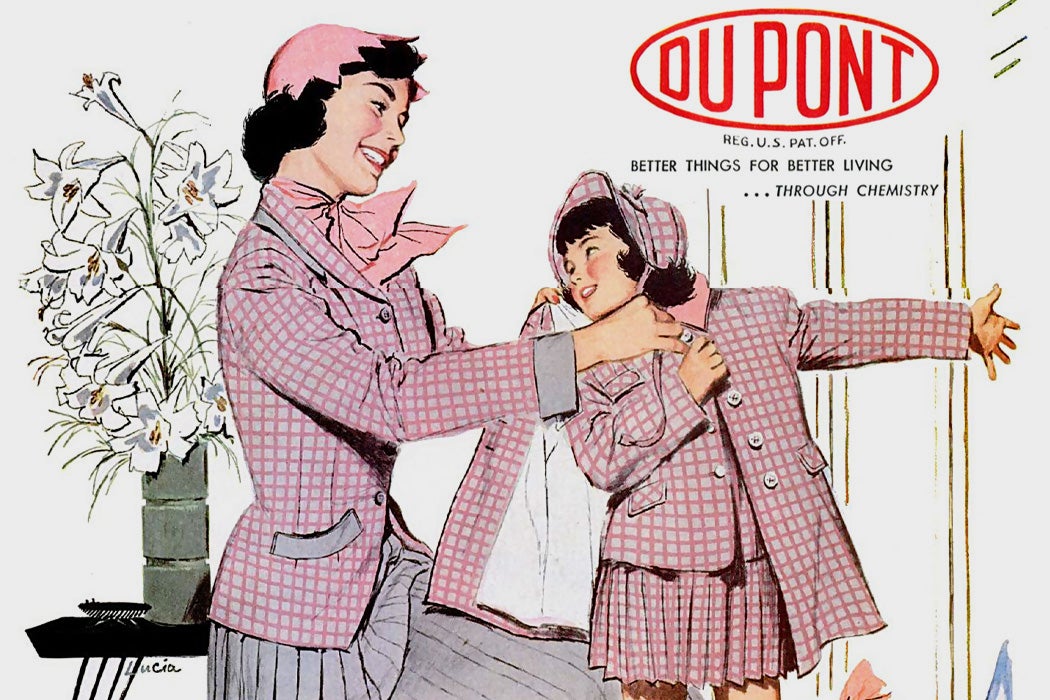Between the 1930s and 1950s, the role of corporations, consumerism, and central planning in the United States changed dramatically. As architecture scholar Andre Michael Shanken writes, we can learn a lot about how that happened by looking at the phrase “better living.”
Shanken finds the first instance of the phrase “better living” in the Federal Housing Administration’s Better Housing Program literature from 1934. The program was designed to spur demand for new and modernized homes as part of the federal effort to fight the Great Depression. But, given the widespread distrust of big business in the New Deal era, opponents feared that it was a first step toward nationalizing the nation’s housing industry.
It was in this environment that the DuPont company hired advertising executive Bruce Barton. Shanken writes that Barton may or may not have read the phrase “better living” in the FHA literature. Either way, he elevated “better living” to broad public awareness by coining the DuPont slogan “Better things for better living through chemistry.”
DuPont needed to revive a reputation that was in peril. The book Merchants of Death had just come out, pointing to the company’s history as a World War I profiteer. With the new “better living” slogan, DuPont tried to shift its image from munitions-maker to chemical company capable of fulfilling consumers’ needs and wants with miraculous synthetic materials. In print advertisements, the slogan often accompanied an innocuous image like a girl dancing in a dress made of rayon, or a gardener using an insecticide to protect his plants.
In a broader ideological sense, Barton’s “better living” was about portraying big business as a force for moral good and continuous progress. It was an era before strict trademark law, and soon other companies had adopted the phrase. Companies incorporated it into ads for air-conditioners, insulation, and heating systems. At its exhibit in New York’s 1939 World’s Fair, General Electric built a mock-storefront with “BETTER LIVING” in brightly-lit letters across the front.
For advertisers during World War II, “better living” stood in for a promise of post-war bounty. Companies associated it with “194X,” a term they used to portray the world that would come once the war was over. In one fantastical campaign titled “Revere’s Part in Better Living,” a building materials company envisioned family homes where people condensed water from the air, burned trash to make energy, and commuted to work in personal planes.
Weekly Digest
Shanken writes that not all visions of “better living” focused on individual family homes or consumerist visions of progress. In the 1950s and ‘60s, the phrase became a common part of government urban planning efforts, providing soft language for discussing a topic that might otherwise be associated with communism and totalitarianism.
“Corporate capitalism had lifted better living from government housing initiatives and stocked it with modernist ideas and images,” Shanken writes, “And now planning authorities borrowed the slogan back as a public relations maneuver to soften the idea of planning in Cold War America.”







